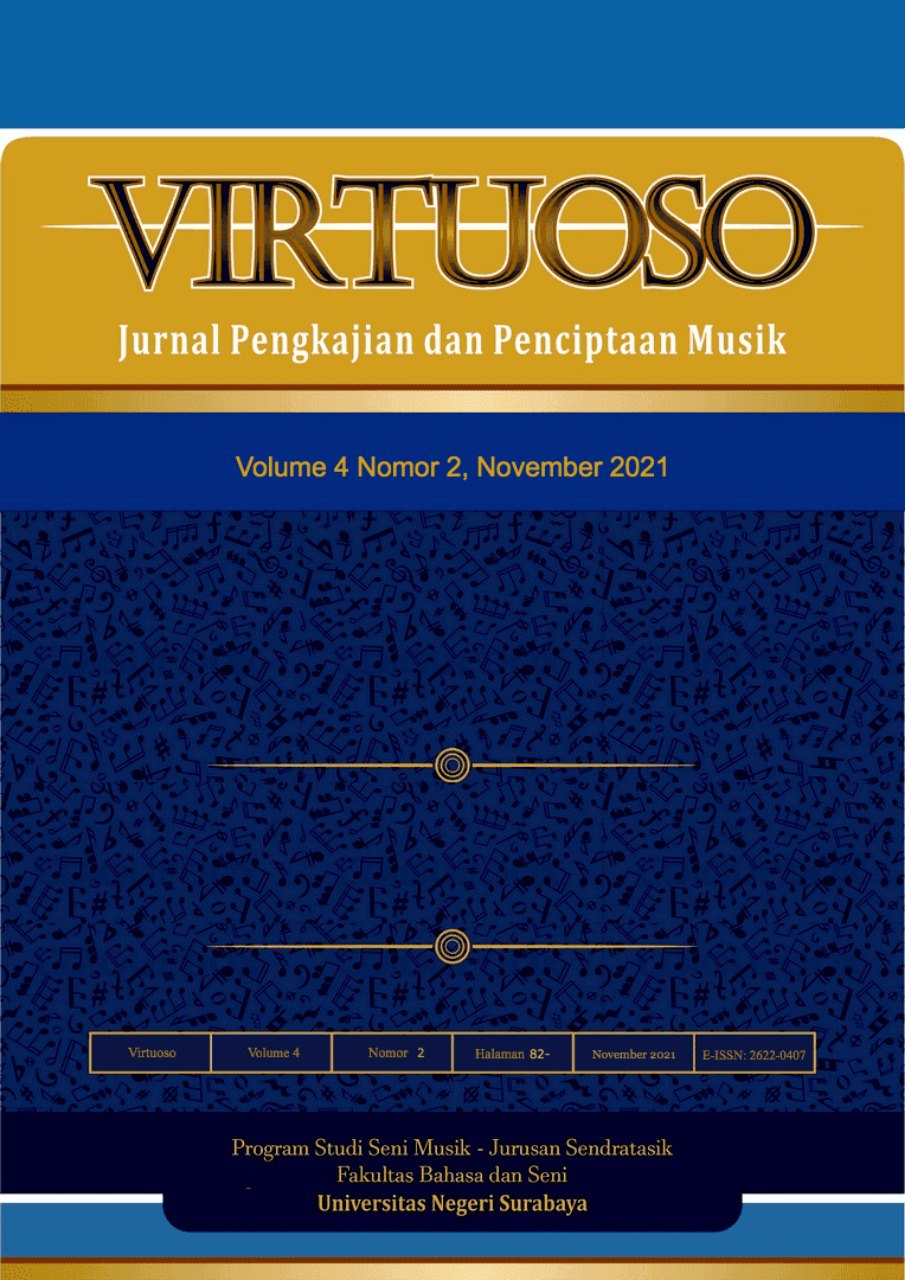Eksistensi Pencipta Lagu Setelah Peraturan Pemerintah Nomor 56 Tahun 2021 Disahkan
Main Article Content
Abstract
Based on the phenomenon of the endorsement of PP Number 56 of 2021, formulated research questions, namely how the songwriter responds after the rule is passed, and what impact the rule has on the existence of the songwriter. This research aims to find out the response and impact of PP No.56 of 2021 for songwriters, as well as help the government in the socialization of the rules. The research method used is qualitative with data reduction procedures, data classification, data presentation, conclusion withdrawal and verification of data from data collection results through interviews, participant observations and documentation. The results showed that the positive response of songwriters after PP Number 56 of 2021 was passed through self-registration and work in LMK creator rights, as well as registering works online at DJKI Kemenkumham. But there are also songwriters who have not responded to registering works institutionally because of concerns that creation will be consumed on a limited basis so as to provide publication losses for creators. Furthermore, the impact of these rules on the existence of songwriters is to make creators more productive to produce works periodically, the creation of works becomes more quality and quality in the world of the music industry, and the right to publish songwriters exist in the community and exist on the side that utilizes national and international works.
Downloads
Article Details

This work is licensed under a Creative Commons Attribution-NonCommercial-ShareAlike 4.0 International License.
The copyright of the received article once accepted for publication shall be assigned to the journal as the publisher of the journal. The intended copyright includes the right to publish the article in various forms (including reprints). The journal maintains the publishing rights to the published articles.
References
Adi, Isbandi Rukminto (2013). Kesejahteraan Sosial, Depok : Rajawali Pres.
Azizol, A. (2017). Sonic exploration of alto recorder for Nadi Bumi: Applied research in contemporary classical music composition. Malaysian Music Journal, 6(2).https://doi.org/10.37134/mjm.vol6.2.4.2017
Hasanah, H. (2017). Teknik-Teknik Observasi (Sebuah Alternatif Metode Pengumpulan Data Kualitatif Ilmu-ilmu Sosial). At-Taqaddum, 8(1). https://doi.org/10.21580/at.v8i1.1163
Husnun, A., Hafiz, M., Ramadhani, R., & Balerina, W. H. (n.d.). Padjadjaran Law Review. https://www.kompas.com/tren/read/2021/04/09/1150
Ikram, A. D. (2020). Eksistensi Grup Dj Vibetronic Sebagai Penyaji Electronic Dance Music di Kota Surabaya. Virtuoso: Jurnal Pengkajian Dan Penciptaan Musik, 2(1). https://doi.org/10.26740/vt.v2n1.p28-33
Krzy?aniak, M. (2021). Musical robot swarms, timing, and equilibria. Journal of New Music Research, 50(3). https://doi.org/10.1080/09298215.2021.1910313
Muhtar, S. W. (2021). Penyajian Musik Tradisional Gandrang dalam Prosesi Akkorongtigi. Nuansa Journal of Arts and Design, 4(2). https://doi.org/10.26858/njad.v4i2.17291
Regina Widyaningtyas, K., & Haura Zahra, T. (n.d.). Padjadjaran Law Review Tinjauan Hak Cipta Terhadap Kewajiban Pembayaran Royalti Pemutaran Lagu di Sektor Usaha Layanan Publik.
Sinaga, E. J. (2020). Pengelolaan Royalti atas Pengumuman Karya Cipta Lagu. Jurnal Ilmiah Kebijakan Hukum, 14(3). https://doi.org/10.30641/kebijakan.2020.v14.553-578
Somawati, A. V., Adnyana, K. S., Darmawan, I. P. A., Dewi, N. P. D. U., Untara, I. M. G. S., Suadnyana, I. B. P. E., & Paramita, I. B. G. (2020). Bali vs Covid-19: Book Chapters. Nilacakra, 1.

